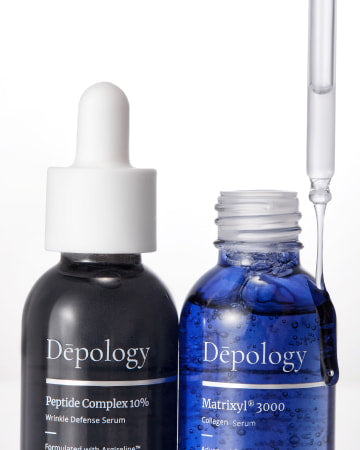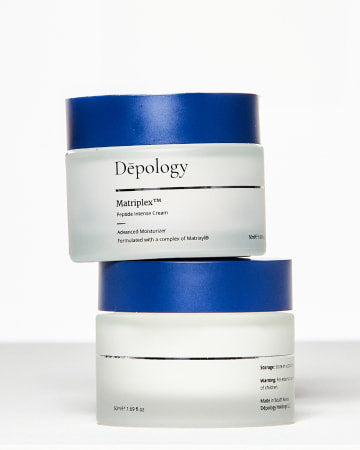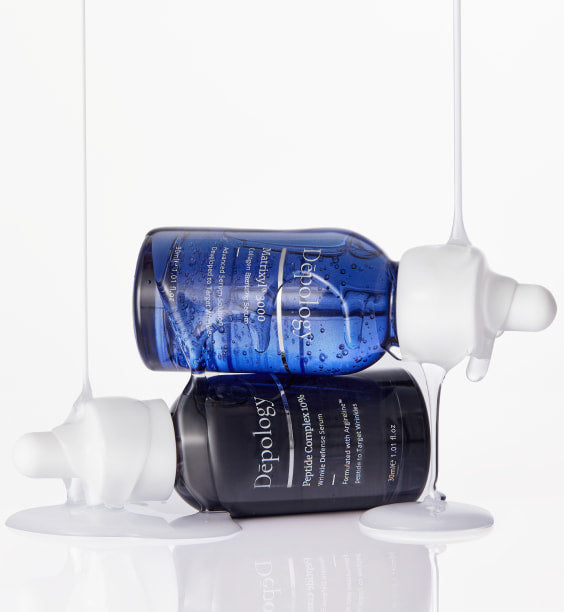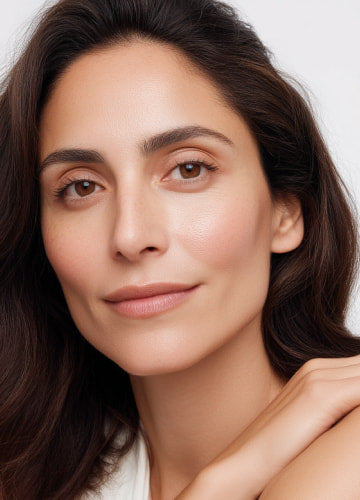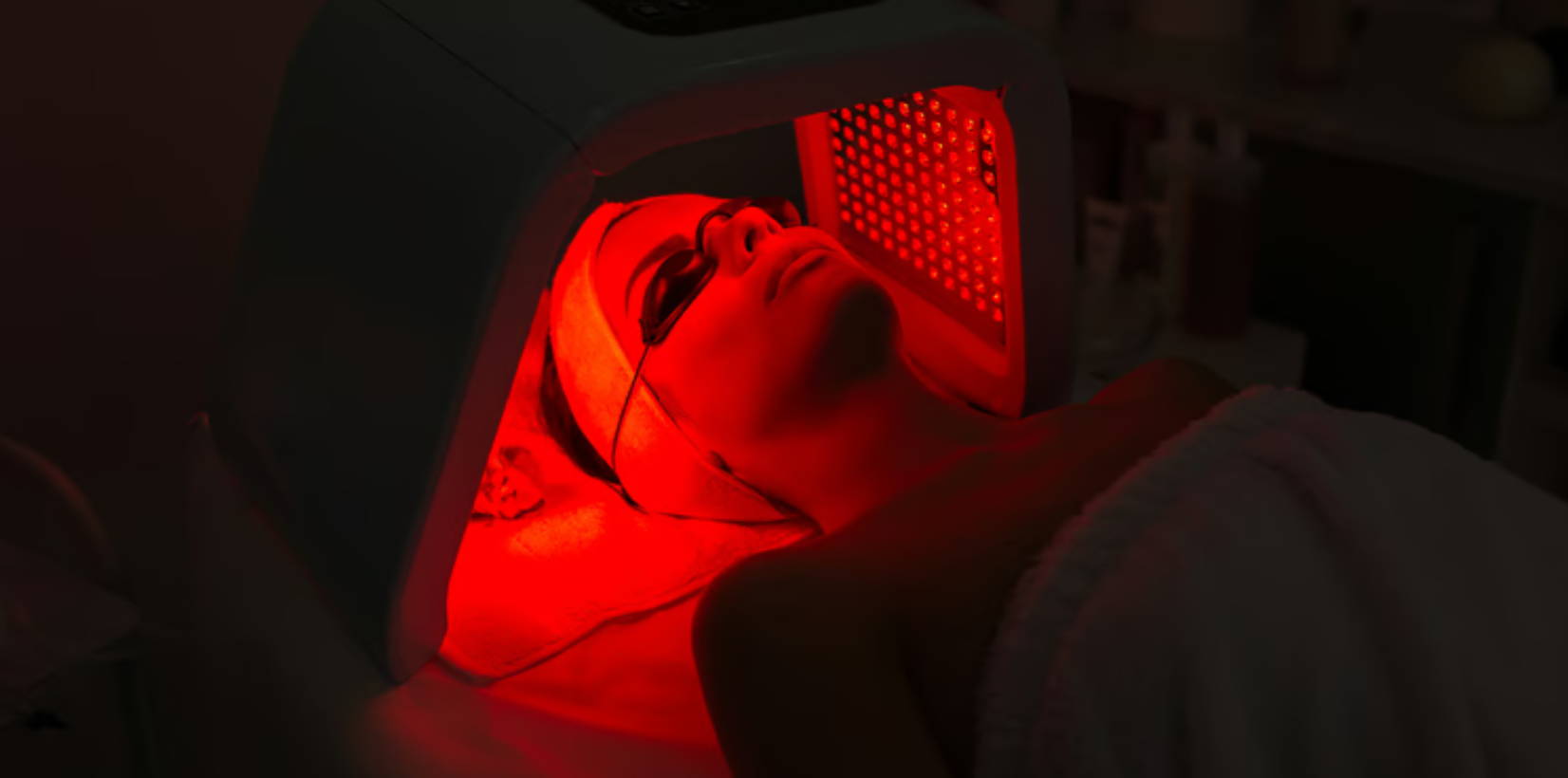
Red Light Therapy For Skin Tightening: Does It Work?
Though it might sound intimidating at first, red light therapy continues to show optimism in both the medical field and the skincare industry. It has been used to treat conditions including acne, eczema, psoriasis, and rosacea, as well as aging signs such as wrinkles, scars, and inflammation, to name a few.
If you’ve been looking for a new treatment but are unsure if infrared therapy is for you, continue reading to have all your uncertainties answered. You might be booking that appointment or ordering that at-home device sooner than you think!
What is infrared light therapy?
Infrared light therapy, also known as infrared therapy or photo-biomodulation therapy, involves the use of specific wavelengths of infrared (IR) light to stimulate healing and provide therapeutic benefits to the body.
Originally, NASA experimented with this version of therapy to study plant growth capabilities in space, as well as wound healing for astronauts. From there, its potential uses only evolved. This therapy is considered non-invasive and is often used for various medical and cosmetic purposes.
Infrared light is a part of the electromagnetic spectrum with wavelengths longer than visible light. “Near-infrared” light is closest in wavelength to visible light, while “far-infrared” is closer to the microwave region of the electromagnetic spectrum. Infrared light is divided into three categories:
Near-Infrared (NIR): Wavelengths ranging from 700 to 1400 nanometers (nm).
Mid-Infrared (MIR): Wavelengths between 1400 and 3000 nm.
Far-Infrared (FIR): Wavelengths above 3000 nm.
Does red light therapy work for skin tightening?
The exact mechanisms of infrared light therapy are still not fully understood. It has been known to work by increasing blood flow, enhancing cellular metabolism, and promoting the release of nitric oxide, which can have a vasodilating (blood vessel-widening) effect. These effects can lead to improved tissue repair and reduced pain and inflammation.
Infrared light therapy can be administered using various devices, including handheld devices, panels, lamps, and saunas. The choice of device depends on the specific application and the area of the body being treated.
Aside from skin tightening, infrared therapy is used for other cosmetic purposes, such as:
Pain Relief: Infrared light therapy is often used to alleviate pain and reduce inflammation in conditions such as arthritis, muscle strains, and joint pain.
Wound Healing: The treatment can stimulate the growth of new cells and tissues, aiding in the healing of wounds, burns, and ulcers.
Skin Rejuvenation: Infrared therapy is utilized in cosmetic treatments to improve the appearance of the skin, reduce wrinkles, and promote collagen production.
Relaxation and Stress Reduction: At your next visit, you might discover this treatment in saunas and spa treatments for relaxation and detoxification.
Red light therapy is generally considered safe when used as directed. However, it's best to use devices with appropriate wavelength and intensity settings. Avoid looking directly into high-intensity infrared light sources, as they can potentially harm the eyes.
For specific medical conditions, it's advisable to seek guidance from a healthcare professional who can recommend the appropriate therapy and treatment plan.
How long does it take for red light therapy to tighten skin?
The time it takes for red light therapy to tighten skin can vary widely depending on several factors, including the specific device used, the individual's age, skin type, and the severity of skin laxity. Red light therapy, also known as low-level laser therapy (LLLT), stimulates collagen production and can gradually improve the elasticity and appearance of the skin.
That being said, it should not be used as a quick fix, and results typically develop over time. Like most aspects of skincare, desired results require patience over instant gratification.
For personal reference, here are some general guidelines in terms of the timeline for visible skin tightening results with red light therapy:
Consistency: Consistency is key when it comes to red light therapy. To see noticeable improvements, it's often recommended to use the therapy consistently over several weeks to months.
Frequency: The frequency of red light therapy sessions can vary, but many people start with a few sessions per week, gradually reducing the frequency as they start to see improvements. The frequency of performing sessions will also vary depending on each individual’s budget.
In-office treatments can range anywhere from $25 to $200 per 15-minute session. At-home devices are often more cost-effective but may require further patience and work on the end of the patient, as well as added caution.
Duration: Each session typically lasts around 10-30 minutes, depending on the device and the area of the body being treated.
Patience: Always have realistic expectations. Red light therapy is a gradual process, and visible results may not be apparent immediately. It can take anywhere from a few weeks to several months to see noticeable tightening and improvements in skin texture and tone. Taking pictures regularly can sometimes help in seeing the results more clearly.
Maintenance: Once you achieve the desired results, regular maintenance sessions may be necessary to sustain the benefits.
Combination with Other Treatments: Some individuals combine red light therapy with other skincare treatments, such as topical products or more invasive procedures, to enhance and expedite the results. Depending on your plan, it could be worth discussing with your doctor about what might be beneficial for your skin.
Individual Variability: The rate of skin tightening can vary significantly from person to person. Factors like age, genetics, overall skin health, and lifestyle habits (diet, hydration, sun exposure) can all influence the speed and effectiveness of the treatment.
For the best results and to ensure safety, it's advisable to consult with a healthcare or skincare professional before beginning any red light therapy regimen, especially if you have underlying medical conditions or concerns about skin laxity. They can provide personalized recommendations and help you set realistic expectations for the treatment timeline.
Does red light therapy increase collagen?
Yes, red light therapy has been shown to increase collagen production in the skin, which can lead to various skin benefits, including improved elasticity, reduced wrinkles, and a more youthful appearance.
Red light therapy primarily works by penetrating the skin and reaching the underlying layers, where it stimulates the activity of fibroblasts. Fibroblasts are the cells responsible for producing collagen, elastin, and other essential proteins that provide structure and elasticity to the skin.
Red light therapy increases the production of adenosine triphosphate (ATP) in cells. ATP is often referred to as the "energy currency" of cells, and it plays a crucial role in various cellular processes, including collagen synthesis.
While red light therapy can stimulate collagen production, results are typically gradual and may require multiple sessions over several weeks to months to become noticeable. The exact timeline for seeing collagen-related benefits can vary depending on individual factors, including age, skin type, and the specific device and treatment regimen used.
Which light is best for skin tightening?
The "best" type of light for skin tightening can vary depending on factors such as your skin type, the specific concerns you want to address, and your tolerance for downtime. Here are some common types of light-based treatments for skin tightening:
Radiofrequency (RF) Therapy
RF therapy, such as Thermage and Venus Freeze, is a popular choice for skin tightening. It uses radiofrequency energy to heat the skin's deeper layers, stimulating collagen production and leading to gradual tightening and firming of the skin. It's non-invasive, requires little to no downtime, and is suitable for various skin types.
Ultrasound Therapy (Ultherapy)
Ultrasound therapy, like Ultherapy, uses focused ultrasound energy to lift and tighten the skin. It targets deeper layers of tissue and can provide long-lasting results. It's non-invasive and typically requires minimal downtime.
Laser Therapy
Laser treatments, such as fractional laser and non-ablative laser, can stimulate collagen production and improve skin tightness. They offer various levels of invasiveness, so the specific laser used should be chosen based on your skin type and concerns. Downtime can vary depending on the intensity of the laser treatment.
LED (Light Emitting Diode) Therapy
LED therapy, including red and near-infrared LED lights, can stimulate collagen production and improve skin texture. It's non-invasive, painless, and typically requires no downtime. While it may not provide as dramatic results as some other treatments, it can be a suitable option for maintenance and mild skin tightening.
Infrared Therapy
Infrared therapy, such as red light therapy, focuses on stimulating collagen production and can be used for skin tightening. It's non-invasive, generally safe, and can be done in short sessions. Results are gradual and may require multiple sessions.
The "best" type of light for skin tightening depends on your specific goals, skin type, and preferences. Be sure to consult with a qualified dermatologist or skincare professional who can assess your skin, discuss your concerns, and recommend the most appropriate light-based treatment for your needs.
Additionally, consider factors like downtime, cost, and the number of sessions required when making your decision. Combination treatments, where multiple types of light-based therapies are used together or in sequence, are also an option for some individuals seeking comprehensive skin tightening results.
What are some alternatives to red light therapy?
The choice of the best skin tightening procedure depends on various factors, including your specific skin concerns, your budget, your tolerance for downtime, and your overall health. There is no one-size-fits-all answer, as different procedures offer different benefits and may be more suitable for certain individuals.
Here are some common skin-tightening procedures to consider:
Micro-needling with Radiofrequency (RF Microneedling)
This combines microneedling with RF energy to stimulate collagen production. It's more invasive than non-invasive treatments but less so than traditional surgery.
Thread Lift
Thread lifts involve inserting dissolvable threads under the skin to lift and tighten. It's a minimally invasive alternative to a facelift.
Facelift (Rhytidectomy)
A facelift is a surgical procedure that involves removing excess skin and tightening the underlying tissues. It can provide dramatic and long-lasting results but requires downtime and carries surgical risks.
Similar to a facelift but focused on the neck area, a neck lift can improve sagging skin and neck bands.
Dermal Fillers
While not a traditional skin tightening procedure, dermal fillers can be used to restore volume to areas of the face, which can have a subtle tightening effect on the skin.
Topical Products
Some skincare products contain ingredients like retinoids and peptides that can help improve skin firmness and texture.
Healthy Lifestyle
A healthy diet, regular exercise, and adequate hydration can contribute to better skin elasticity and overall skin health.
The best procedure for skin tightening depends on your specific goals and circumstances. It's crucial to consult with a board-certified dermatologist or plastic surgeon who can assess your skin, discuss your objectives, and recommend the most suitable treatment or combination of treatments for your needs.
Conclusion
Red light therapy is considered a non-invasive and safe treatment when used correctly. However, use reputable devices and follow recommended guidelines. Consulting with a healthcare or skincare professional can provide you with beneficial recommendations on the most effective and safe use of red light therapy for your specific skincare goals.



